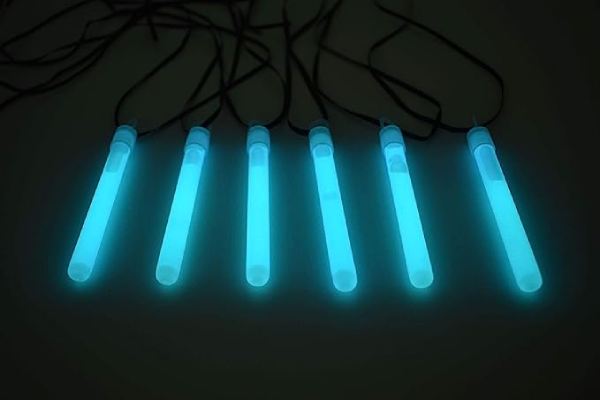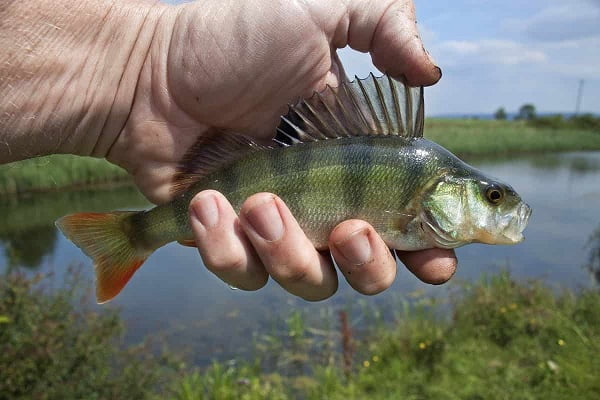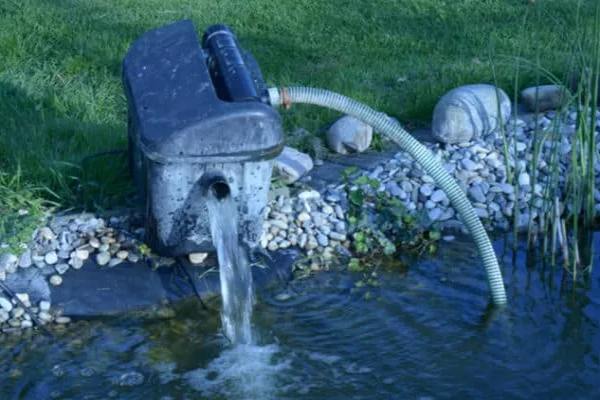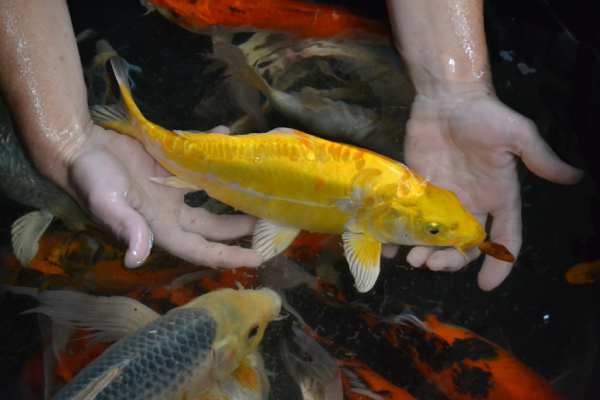Koi Fish Water Temperature – Maintaining an Ideal Habitat
Koi fish are a common addition to garden ponds and are known for their beautiful patterns and graceful movement in the water.
Optimal water conditions are essential to the survival of these stunning fish. They are sensitive to changes in water temperature, which affects their health and behavior.
If you are a koi fish enthusiast who is bothered about how to care for your koi fish in summer and winter then keep reading because we’ve got you covered, you can also learn more about koi fish anatomy.
We will also let you know the ideal water temperature for your koi fish. Now, without wasting much time, let’s get started.
Koi water temperature range
Koi fish are a type of cold-water fish that can only survive in certain water temperatures. Koi fish thrive in water between 15 and 25 degrees Celsius (59 and 77 degrees Fahrenheit). This is the sweet spot for koi fish, where they can thrive in terms of growth, metabolism, and overall health.
Koi Fish and Extreme Weather
Koi fish are well-known for their adaptability, which allows them to thrive in a wide range of habitats, even in harsh climates.
In this section, we will explore how koi fish cope with extreme weather and the remarkable adaptations that help them thrive in adverse conditions.
Immune System
Koi fish have a powerful immune system that is crucial to their survival, especially in harsh environments. The immune system protects the fish from harmful pathogens and parasites, keeping it healthy as a whole.
However, your koi’s immune systems can be compromised by extreme weather, making them more vulnerable to diseases.
Your Koi fish may have a weak immune system during periods of high heat or cold. High temperatures can cause oxygen levels in the water to drop, stressing the fish and making them more vulnerable to infections.
On the other hand, your koi fish may be more vulnerable to parasite and bacterial infections when exposed to excessively cold temperatures because their immune systems are weakened.
Digestion
Koi fish are able to easily digest a wide variety of foods due to their distinctive digestive mechanisms. Algae, aquatic plants, and even insects make up a small portion of their diet. Their flexible digestive tract allows them to deal with fluctuations in food availability during extreme weather conditions.
In extreme weather, when food sources may be scarce, your koi fish can reduce their metabolic rate and rely on stored energy reserves. They may go for long periods of time without eating because their metabolism slows down.
Regulating Koi Pond Water Temperature
Water temperature has a major impact on your koi fish’s health. The metabolism of koi is at its peak when the water temperature is between 15 and 25 degrees Celsius. Temperatures above 28 degrees Celsius, however, promote bacterial development and activity.
Increases in water temperature also reduce the amount of oxygen in the water and dissolve harmful substances like ammonia.
You know, the health and survival of your koi fish can be jeopardized by either excessively high or extremely low temperatures.
So, it is crucial to regulate the water temperature in your ponds and tanks for the safety of your koi fish. Using a dependable pond thermometer is one useful instrument for accomplishing this.
A pond thermometer makes it simple to keep tabs on the temperature of the water in your koi fish pond and act quickly if necessary to prevent harm.
Protecting Koi Fish During Summer
Protecting your koi fish during the summer is crucial, as this keeps them healthy. In this section, we will go over how to protect your koi fish during the summer.
Change Water Frequently
Koi fish need to have their pond water changed frequently throughout the summer months to keep them healthy.
You know, high temperatures can lead to poor water quality, which can have detrimental effects on the health and well-being of Koi.
By following a few key steps, you can ensure that your Koi fish remain healthy and thrive in their aquatic environment.
Drain the pond
Another way to protect your koi fish during the summer is by draining out some of the water in the pond. Aim to drain between 25 and 30 percent of the water volume.
Waste, surplus nutrients, and potential pollutants can all be flushed away in this way. Changing out some of the water in the pond helps keep it clean and healthy for the Koi fish.
Dechlorinate water before refilling the pond
Water from the tap should be dechlorinated before being reintroduced to the pond, as chlorine and other pollutants are often present.
Dechlorinating the water in the pond is a necessary step before restocking it. The water will be safe for your Koi after a dechlorinating agent is added to neutralize the chlorine.
Compensate for lost nutrients
Nutrient replacement is necessary since water changes not only get rid of trash and contaminants but also the nutrients that your Koi needs to thrive.
Add a high-quality Koi fish meal or other specialty pond fish diet that is abundant in necessary nutrients to make up for this. This will help in keeping your Koi fish healthy
Shade the Pond
Warmer water and less oxygen in the pond result from prolonged exposure to sunlight. Overheating can be avoided and the likelihood of an algal bloom is reduced by using shade.
A pergola or canopy built over the pond can provide shade, as might aquatic plants with broad leaves. This serves the dual purpose of keeping your fish safe and making the area seem nice.
Circulate the Pond Water
To prevent low oxygen levels and the buildup of dangerous compounds, it’s important to regularly circulate the water in the pond.
The water in a pond can be kept clean and oxygenated with the help of a pond pump and filtration system.
In addition, adding aeration devices like air stones or fountains can help make the pond healthier for your Koi fish by increasing oxygen exchange and water circulation.
Add Ice to the Pond
It can be helpful to add ice to your pond when temperatures soar. A localized chilling effect can be achieved by placing floating bags of ice or ice packs in your pond.
This temporary measure can provide relief for your fish and prevent extreme temperature fluctuations.
Increasing Pond Depth
Koi fish are more likely to suffer stress from temperature swings in shallow ponds. The depth of your pond should be increased if possible.
Water’s thermal properties are more consistent and lower at greater depths, making it an effective natural buffer against temperature swings. This will help shield your koi from the summer’s scorching rays.
Keeping Koi Pond Warm During Winter
Your koi fish may face a threat to their health and well-being when winter sets in and the temperature drops.
It is crucial to make efforts to keep the pond warm during the winter to ensure its survival and maintain the pond’s general quality. Here are a few ways you can achieve that;
Retain the Ice and Snow on the Surface of the Pond
Keeping the snow and ice on the pond’s surface can help keep the water warm during the winter. Keeping the ice and snow on the pond’s surface will increase its insulating properties.
While it may be appealing to remove the ice and snow from the surface, especially for aesthetic reasons, doing so can actually cause the water to chill more quickly.
The ice and snow layer functions as a barrier between the water and the cold air, reducing the frequency and severity of temperature swings and making conditions more stable for your koi.
Cover the Pond
You can also keep your koi pond warm in the winter by using a pond cover. A pond cover can prevent water from freezing by acting as an insulator.
Mesh nets and rigid coverings are two types of pond covers that can be purchased.
Unlike solid covers, which provide better insulation but may require an entrance to allow for gas exchange, mesh nets allow for air circulation while keeping leaves and debris from falling into the pond.
Use a Pond Heating System
A dependable method to keep the koi pond at an appropriate temperature all through the winter is to install a pond heating system. In addition to pond de-icers, there are also inline boilers for heating pond water.
Inline Boilers
Inline boilers are a common method of heating water for bigger koi ponds. This system can increase the water temperature of a pond by circulating warm water through pipes that are buried beneath the surface.
Pond de-icer
To avoid the buildup of ice on the pond’s surface, you can use a pond de-icer. This functions by drilling a tiny hole in the ice, which permits gas exchange and prevents the accumulation of hazardous gases.
Turn Off the Water Cooling Features
Many ponds contain water-cooling elements like waterfalls or fountains, which add to the pond’s beauty in the summer but can be a source of heat loss in the winter and should be turned off.
Turning them off will reduce the amount of heat lost through evaporation and help maintain a consistent water temperature.
Run an Air Pump
Maintaining adequate oxygen levels in your Koi pond during the winter requires the use of an air pump. Especially in cooler temperatures, when oxygen dissolves less easily, the air pump will improve the oxygenation of the water, making it suitable for your Koi.
Move the Koi to a Fish Tank
If your Koi pond lacks proper insulation or warmth, it may be preferable to temporarily relocate your fish to an indoor fish tank.
The temperature and water quality can be adjusted with greater precision. Make sure the tank is big enough and has a filter system to keep the water clean.
Make Your Pond Deeper
Adding depth to your Koi pond is a simple technique to make it more stable temperature-wise. Since the cold air has a harder time penetrating deeper layers of water, the water’s temperature is more stable.
If you want to give your Koi the best possible home, you should aim for a pond depth of at least 4 feet.
Now that you have known how to keep your fish warm during the winter, let’s quickly look at the things you should consider when building a pond for your koi fish.
Things to consider when building a pond
There are a number of variables to consider in order to create a healthy and thriving aquatic environment for your koi.
Size
The available space and the pond’s intended purpose will dictate the pond’s size. A more stable ecosystem can be maintained in a larger pond since more plant and aquatic species can thrive there. Furthermore, larger ponds are more resilient to temperature and climatic changes.
Temperature
The temperature of the pond’s water is crucial to the well-being of your koi. It is crucial to choose aquatic plants and koi species that can thrive in your area’s average temperature range.
Maintaining an appropriate temperature range for the species of interest may necessitate the use of shading structures or artificial heating and cooling systems.
Water Source
The water source for your pond is another important factor to think about. Having a reliable source of clean water is crucial.
To protect aquatic life, dechlorination may be necessary when using municipal water supplies.
A more eco-friendly option is to collect rainwater for later use, but this may necessitate further filtration to get rid of contaminants.
Conclusion
As you can see from the blog post, Koi fish thrive in water that is kept at just the right temperature. They thrive in water between 59 and 77 degrees Fahrenheit (15 and 25 degrees Celsius).
At this temperature, they develop at their quickest rate, have the most active metabolism, and look the healthiest.
However, the koi’s immune system and digestion can be compromised by harsh weather, leaving them more vulnerable to disease and hunger swings.
Therefore, it is crucial for koi owners to keep an eye on the water temperature, take the necessary steps to strengthen the fish’s immune system, and feed it properly.
FAQs
Koi fish thrive in water that is between 15 and 25 degrees Celsius (59 and 77 Fahrenheit).
The immune system of koi fish can withstand a wide range of temperatures, but stress from extremely high or low temperatures can render them more vulnerable to disease.
If the water gets too hot, you can cool it down by adding ice or using other cooling methods. If the temperature drops too low, pond heating equipment or insulation can be used to restore the water’s warm state.

![Do Fish Get Bothered by Pond Lights? [Pond Lighting]](https://pondmemo.com/wp-content/uploads/2023/08/do-fish-get-bothered-by-pond-lights-img_1.jpg)




